
The Victory ship was a class of cargo ship produced in large numbers by North American shipyards during World War II to replace losses caused by German submarines. They were a more modern design compared to the earlier Liberty ship, were slightly larger and had more powerful steam turbine engines giving higher speed to allow participation in high speed convoys and make them more difficult targets for German U-boats. A total of 531 Victory ships were built.
SS Sauternes was a steamship built in 1922. It was known as the Jólaskipið in the Faroe Islands. It sank in a storm in the firth Fugloyarfjørður within the Faroe Islands on 7 December 1941; all 25 passengers and crew were lost. Among the casualties was Captain George Albert Perris of the Royal Army Service Corps. He is buried in Klaksvík old cemetery, along with four other service personnel from the same disaster.
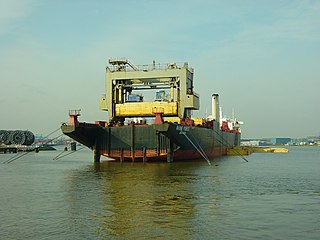
The lighter aboard ship (LASH) system refers to the practice of loading barges (lighters) aboard a bigger vessel for transport. It was developed in response to a need to transport lighters, a type of unpowered barge, between inland waterways separated by open seas. Lighters are typically towed or pushed around harbors, canals or rivers and cannot be relocated under their own power. The carrier ships are known variously as LASH carriers, barge carriers, kangaroo ships or lighter transport ships.
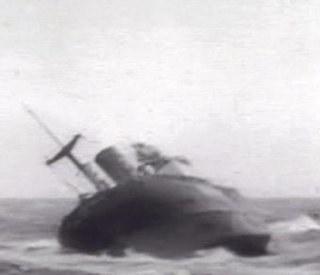
SS Flying Enterprise was a 6,711 ton Type C1-B ship which sank in 1952. She was built in 1944 as SS Cape Kumukaki for the United States Maritime Commission for use in World War II. The ship was sold in 1947 and then operated in scheduled service under the name Flying Enterprise.

An ammunition ship is an auxiliary ship specially configured to carry ammunition, usually for naval ships and aircraft. An ammunition ship′s cargo handling systems, designed with extreme safety in mind, include ammunition hoists with airlocks between decks, and mechanisms for flooding entire compartments with sea water in case of emergencies. Ammunition ships most often deliver their cargo to other ships using underway replenishment, using both connected replenishment and vertical replenishment. To a lesser extent, they transport ammunition from one shore-based weapons station to another.
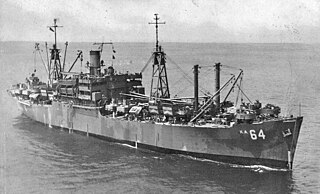
USS New Hanover (AKA-73) was a Tolland-class attack cargo ship of the United States Navy named after New Hanover County, North Carolina. Like all AKAs, New Hanover was designed to carry military cargo and landing craft, and to use the latter to land weapons, supplies, and Marines on enemy shores during amphibious operations. She served as a commissioned ship for 19 months.

The USNS Sea Lift (T-LSV-9) was a roll on/roll off (Ro/Ro) cargo ship built for the United States Navy's Military Sea Transportation Service (MSTS), currently the Military Sealift Command (MSC). She became the first ship of Ro/Ro-type to deliver cargo to Vietnam during the war in Indochina.

USS Keokuk (AN-5/CM-8/CMc-6/AKN-4) was a mine and net laying ship of the United States Navy during World War II.

USS Mizar (AF-12) was a United Fruit Company cargo and passenger liner that served as a United States Navy Mizar-class stores ship in World War II.
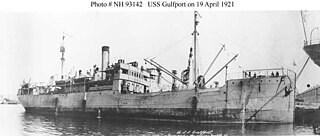
USS Gulfport (AK-5) was a cargo ship acquired by the U.S. Navy for service in World War I.
USS Hidalgo (AK-189) was an Alamosa-class cargo ship that was constructed for the U.S. Navy during the closing period of World War II. She was declared excess-to-needs and returned to the U.S. Maritime Commission.
USNS Sgt. Truman Kimbro (T-AK-254) was a Boulder Victory-class cargo ship built for the U.S. Maritime Commission during the final months of World War II as the SS Hastings Victory.
A number of steamships have been named Venus, including
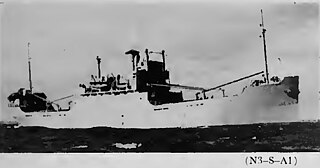
Type N3-S ships were a Maritime Commission small coastal cargo ship design to meet urgent World War II shipping needs, with the first of the 109 N3, both steam and diesel, type hulls delivered in December 1942.
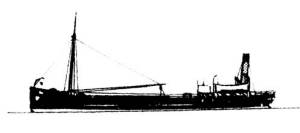
SS Traffic was a baggage tender of the White Star Line, built in 1872 by Philip Speakman in Runcorn. She was based at the Port of Liverpool, and maintained a 24-year career with White Star. Traffic briefly served as a cargo vessel, but soon returned to tendering service.
SS Berlin may refer to one of the following ships

The SS Canada Victory was one of 531 Victory ships built during World War II under the Emergency Shipbuilding program. She was launched by the Oregon Shipbuilding Corporation on January 12, 1944, and was completed on February 28, 1944. The ship’s United States Maritime Commission designation was VC2-S-AP3, hull number 93 (1009). The Maritime Commission turned her over to a civilian contractor, the Alaska SS Company, for operation.

The Type R ship is a United States Maritime Administration (MARAD) designation for World War II refrigerated cargo ship, also called a reefer ship. The R type ship was used in World War II, Korean War, Vietnam War and the Cold War. Type R ships were used to transport perishable commodities which require temperature-controlled transportation, such as fruit, meat, fish, vegetables, dairy products and other foods. The US Maritime Commission ordered 41 new refrigerated ships for the US Navy. Because of the difficulty of building refrigerated ships only two were delivered in 1944, and just 26 were delivered in 1945 and the remainder in 1946–48. The 41 R type ships were built in four groups. Two of design types were modified type C1 ships and two were modified type C2 ships. The United Fruit Company operated many of the R type ships in World War II. The type R2-S-BV1 became the US Navy Alstede-class stores ship and the type R1-M-AV3 became the US Navy Adria-class stores ship.

The SS American was a steamship built by Harland and Wolff in Belfast, which entered service in 1895. the American was a combined cargo and passenger ship which was originally built for the West India and Pacific Steamship Company along with her sister ship the SS European. In 1904 she passed to the White Star Line and was renamed Cufic, the name she retained until she was sold to Italian ownership in 1924, after which she became known as Antartico then Maria Guilia until being scrapped in 1932.
This page is based on this
Wikipedia article Text is available under the
CC BY-SA 4.0 license; additional terms may apply.
Images, videos and audio are available under their respective licenses.













